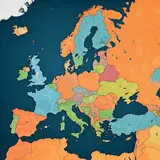Educating for Equality: How Increased Schooling Leads to More Women in Power

A new study examines the impact of women's education on their representation in politics across several European countries. The study uses regional data from 2003 to 2018, and relies on changes in schooling laws to explore how education affects political representation. The results demonstrate that increased female education significantly boosts the percentage of women elected to regional governments. Specifically, a one-percentage-point rise in women with at least secondary education leads to a 21-percentage-point increase in female political representation.
The study also identifies the mechanisms driving this relationship. Education increases women’s interest in politics and encourages more egalitarian gender-role attitudes among women, though it does not have the same effect on men. This suggests that education not only equips women with the tools to participate in politics, but also challenges the societal norms that hinder their representation in the first place. The findings suggest that education is a critical policy tool for reducing gender disparities in political participation and representation.
The study, “Bridging the Gender Gap: Women’s Education and Political Representation,” conducted by Luna Bellani and Marisa Hidalgo-Hidalgo and published in The Economics of Education Review, highlights the transformative impact of education on women’s political participation. Its findings underscore the remarkable role that teachers play in shaping their communities and incubating leadership aspirations among young women. Women in leadership positions bring unique perspectives that help craft policies addressing society's diverse needs. Moreover, their presence serves as powerful inspiration for young girls to pursue leadership roles themselves. Other research further supports this, showing that governments with higher female representation often achieve better outcomes in education.
How do we know when women have “enough” representation? And what role do men play in achieving equitable representation?